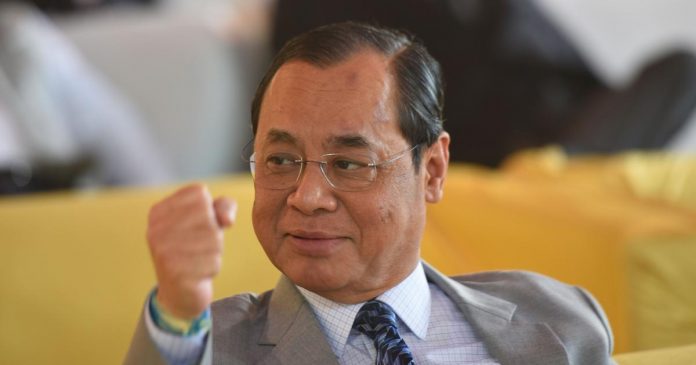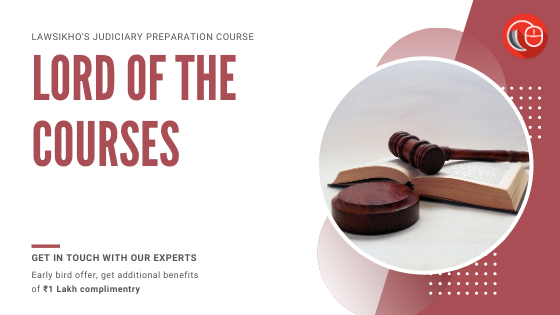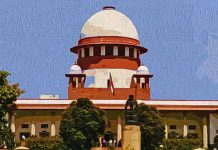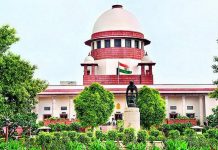This article is written by Dhananjai Singh Rana, Student, BBA LLB(H), Amity Law School Noida. This article deals with the analysis of the Collegium system in the Constitution about the appointment of the judges to the Supreme Court and High Court.
Table of Contents
Introduction
The CJI or the adjudicator of India is the senior-most Judge inside the Supreme Court of India and is at risk for the portion of cases to the different courts and deals with the arrangement of sacred benches nearby investigating the issues of national significance. This arrangement is referenced under Article 145 of the Constitution of India which expresses that the CJI will assign cases to various benches and that they are liberal to take his feelings during a situation where a more extensive point of view is required to be broken down inside the cases.
According to the norms, the CJI shall be-
- A Judge for five years.
- An advocate of the Supreme Court for 10 years or more.
- Recommended by the President of India for becoming a member of the Rajya Sabha.
Why are questions being raised on his appointment?
There is a need for amendments in the current system for the selection of judges to the SC and therefore the requirements keep changing. There are considerations of seniority, adequate representation of high courts, gender, religion, caste, and merit sometimes finds an area also.
A new criterion has recently been introduced that is as to who is going to be the judge in the Supreme Court of India, for a way long and who should be blocked. Is it possible to eradicate this Chancellor’s Foot symptoms? The Judges have objected to the same in recent times.
The people of our country have faith in our judiciary and they must maintain it and serve their duties in the public interest, as the failure to do so may cause chaos. But unfortunately, the religion has been affected by occasions in a couple of years and except if we are safeguarded from the sand trap through extremely fast remedial measures, all people will wind up inside the sinkhole.
There is no discussion that the most significant issue confronting the legal executive is that the number of pending cases—more than three crores. Before attempting to determine this issue, the inquiry to be posed is: How would I characterize a ‘pending case’? possibly a case organized yesterday (a traffic challan) the most extreme sum a pending case together initiated twenty years prior (assault and murder) both not yet decided? Each law characterizes the words used in the resolution and accordingly, the court settles on the understanding of these words. In any case, we’ve not yet chosen the meaning of a ‘pending case’ and subsequently all cases inside the courts. If we take the trouble of characterizing every single vital term, we’ll be prepared to more readily value the extent of the matter of back payments.
The unpaid debts in councils and commissions are faltering as well and most cases legitimately sway the basic resident in way of life. Along these lines, though our definitions are clear, if we include the cases pending inside the courts, councils, and commissions, we’ll arrive at an unmanageable caseload that is breaking the back of our equity conveyance framework. This humongous caseload is the clarification for postponements, suspensions, and dissatisfaction among the prosecutors that endure the slings and arrows of absurd setbacks. Healing measures are important and without them, the dissatisfaction may become outraged which can be trailed by doomsday.
Indications of the strain are already felt inside the criminal equity framework with extra-judicial killings in Uttar Pradesh and Telangana, lynching in a few states, and dangers and slaughtering of survivors of assault. I feel that these are undeniable signs that our criminal equity framework has fallen or is surely close to falling. End of the blame and not anticipation for the wrongdoing is by all accounts the kind of the year and a general public represented by the standard of law shouldn’t acknowledge it at all.
The most questionable part of equity conveyance is the appointment of judges and has been so for a very long while. Free India began with autonomous appointed authorities who took autonomous choices. Huge numbers of those choices weren’t to the loving of the foundation and plans were made to handle them. Be that as it may, the adjudicators stood kind of stone, bringing about the foundation speculating on a submitted legal executive. Somewhat, the foundation prevailing with regards to making advances into the freedom of the legal executive, yet the legal executive struck back and arrogated to itself the main position to suggest deciding for the arrangement. This was a demonstration of self-conservation and might be required at that point.
Many inquire about this procedure and a couple even depicts it as depraved. The analysis is lost. Judges just suggest deciding for an arrangement—the procedure of arrangement remains regulated by the political official with the President marking the warrant of appointment. Ongoing occasions have shown that the secret weapons for arrangement are with the political official and at times it does exclude these cards inside the pack. There’s a certain and not all that inconspicuous kind of arm-bending being played out, endangering the freedom of the legal executive. Indeed, even the pundits don’t recommend a better arrangement process; they feature the lessening confidence inside the surviving procedure, however, they seem to have a lot lesser confidence inside the unprejudiced nature of the head selecting judges—the submitted judges’ hypothesis (and maybe more terrible) keeps on frequenting the legitimate clique. There’s a shaky dread that the great intensity of arrangement will be exercised with practically no duty.
Do judges choose judges? No. there’s adequate proof that the govt is slowing down the arrangement of judges stressing that it’s just the govt that selects judges. In light of an issue brought up in Parliament, it had been discovered that upwards of 239 suggestions made by the high courts are “under different phases of preparing” with the administration and accordingly the Supreme Court collegium. What rate proposals are pending with the legislature isn’t known, yet almost certainly, it’s the mass. To what extent it’ll consider the govt to at last procedure these names is impossible to say—it could take a while. The Supreme Court cannot ensure that the strategy is quickly finished by the government and warrants of arrangement marked by the President. It’s a legend that judges designate appointed authorities.
Article 222 of the Constitution accommodates the exchange of an appointed authority starting with one High Court then onto the next. At the point when a CJ is moved, a substitution should likewise be at the same time found for the High Court concerned. There can be an acting CJ in a High Court for not over a month. In issues of moves, the assessment of the CJI “is determinative”, and the assent of the adjudicator concerned isn’t required.
An overview of some of the most controversial judgments by our former CJI
Rafale Deal
Insofar because the choosing procedure cares, on the possibility of specific archives acquired, the solicitors tried to fight that there was opposing material. We, in any case, found that there have been without doubt suppositions communicated inside the course of the decision-making process, which can differ from the decision taken, then again, any choosing procedure visualizes discussions and master conclusion and in this way, the last call is with the skilled power, which so practiced it.
It is similarly unquestionable that the entire discoveries are to be seen from the stance of the character of the ward being worked out. There are no such limitations and confinements on a lawmaker exploring a case under the law. Present a case, making out the commission of a cognizable offense, beginning with the housing of the FIR after, almost certainly, making a fundamental request where it’s important, the fullest of the sufficiency of forces under the law, most likely, are accessible to the officer.
It isn’t the capacity of this Court to work out the expenses nor so far as that is concerned can such angles be tended to on negligible doubt of people who intend to move toward the Court. the inside system of such valuing would watch out of things. On the scrutiny of records, we had discovered that one can’t look at apples and oranges. Along these lines, the valuing of the basic idea must be looked at which was seriously barely lower. on what ought to be stacked on the topic or not and what further estimating ought to be added must be left to the least complex judgment of the capable specialists.
Ram Mandir
The Supreme Court, inside the primary spot, shouldn’t have swum into this discussion at all. It had been completely unjustifiable and good for nothing exercise. Master Ram might be a fanciful origination. He’s an otherworldly figure. Millions and numerous individuals adore him. All things considered, that doesn’t make Lord Ram a recorded character. Best case scenario, it is regularly accepted that Lord Rama lived during the period of pre-written history. Just because it’s accepted that Lord Rama was conceived at a specific area, it doesn’t imply that his admirers will consequently earn the title rights over that particular spot inside the 21st century. Henceforth, it had been unreasonable concerning the Supreme Court to dig into this subject.
After tolerating the unlawfulness of the destruction of the Babri Masjid, the Supreme Court felt free to give Ram Lalla the whole ownership of the contested site. If Ram Lalla might be a juristic individual, as agreed by the Court, Ram Lalla can sue yet it likewise can get sued. Inside the Ayodhya matter, the icon of Ram Lalla was unlawfully and secretly carried inside the Babri Masjid. The Supreme Court recognized an equal.
All through its Ayodhya judgment, the Supreme Court buttressed the significance of secularism. It said that a title debate can’t be chosen by the possibility of religion. Even though the Court made a decent attempt to sound lawfully objective and non-divided, it, in the long run, agreed with the feelings of the mass network. If the case was a title contest, there was no requirement for the then appointed authority Ranjan Gogoi to establish a five-judge bench to tune in to the issue. On top of that, the underlying Ayodhya bench, which was composed by Justice Gogoi, didn’t have one appointed authority from the minority network. From the entirety of this, Justice Gogoi overlooked that “not exclusively should equity be done, however, it should likewise even be believed to be done” by one and everybody.
Not exclusively did the Supreme Court give the ownership of the contested site to Ram Lalla however it likewise set out the outline for the turn of events and the executives of a Hindu sanctuary through a trust. The Court’s judgment, in the interim, conflicted with the focal government’s expressed duty of remaking the Babri Masjid which came against the setting of its destruction. The summit court referenced that the Sunni Waqf was liberal to develop a mosque on the other side that it’ll be apportioned at the same time. The perception that the Court displayed in laying the foundation for the advancement of a Ram sanctuary was missing when it went to the reproduction of the Babri Masjid. The three suits which were mediated upon inside the nineteenth century were additionally not given due significance by the five-judge Court bench.
Case of harassment allegations on him
The board of trustees reports proposes that the Supreme Court has confronted serious analysis because of its request and the treatment of the charges by and large. The analysis hasn’t bolstered the charges however the very reality has been wrongly portrayed against him, “charitably” turned into an area of the bench that inspected the issue which might be an away from of the Principle of Natural Justice “Nemo judex in causa sua” which means “one shouldn’t be an adjudicator in his motivation.” Further, the authority of the Supreme Court was addressed on a few events, viz., when the complainant wasn’t permitted a legal counselor when the three-judge bench of the Supreme Court proceeded with the procedures yet the complainant had blamed the bench for being oppressive against her and had, in this way, prevented being an area from securing any such procedures. Further, significantly after huge amounts of proposals from different lawful law specialists for an outer advisory group to be established to appear into the issue, none was made and in this manner, the issue remained inside the Supreme Court.
Right off the bat, the CJI isn’t over the contrary appointed authorities of the Supreme Court, however, the ‘first among equivalents’ and along these lines, different adjudicators are neither responsible to him nor under any authority of the CJI. Accordingly, the charge that an in-house bench of the Supreme Court abuses standards of regular equity is invalid because the CJI wasn’t an appointed authority for his situation, nor did he apply any undue effect on the contrary adjudicators.
Second, on the subject of establishing an outer council to appear into the issue, another inquiry that emerges is who might comprise this board of trustees. Inside the instance of the other appointed authority of the Supreme Court, the CJI would have the office to comprise a board of trustees, however inside the current situation, who had the power to attempt to do as such?
Thirdly, when the complainant wouldn’t require part inside the procedures of the Supreme Court, she lost the option to get a duplicate of a definitive Report. Additionally, what the board of trustees did was research and not settling. The council needed to gather proof, take articulations from witnesses, investigate every single substantial record, at that point set up its report with all the discoveries. This doesn’t require the complainant staying present at all phases of the examination, along these lines, the subject of ex parte doesn’t exist. Additionally, it had been a reality discovering board of trustees, and in this way, the assistance of a promoter isn’t required, since it’s an insignificant portrayal and noticing down of realities. The standard of Audi alteram partem would apply when the Complainant would be blamed and not how it’s been interpreted here, driving this claim to be lost.
A unique society makes certain to confront debates and in this way, the judiciary isn’t any special case and can’t be protected. The courts get entangled in contention once they are called upon to settle on established issues that sway on the sensitivities of enormous segments of society. The ‘political shrubbery’ teaching has been advanced by the courts to stay far away from issues that are unadulterated of a political nature and lift no uncertainty of sacred understanding, and which is all well and good—makes a decision about aren’t government officials, yet they’re by and by worried about issues of protected ethical quality. This has driven the Supreme Court to condemn matters concerning the lawmaking body, including forces of the legislative leader of a state and establishment of an administration through a story test. These choices have enhanced the glory of the judiciary without, in any way, criticizing the chosen delegates and without impinging on the partition of forces precept.
Be that as it may, there are instances when the lawmaking body has refused to practice its forces for example inside the decriminalisation of homosexuality. There are cases when diplomacy has been missing inside the political official, for example on the section of young ladies to otherworldly places. There likewise are a few cases when the boss didn’t execute social equity laws and government assistance plans and which came to be recognized by the Social Justice Bench of the Supreme Court. The decision in numerous such cases brought about unjustifiable analysis by the political official and diversionary strategies to divert issues. The political official blamed the legal executive for intersecting the Lakshman rekha as far as the partition of forces and f legal hyper-activism by taking up certain elements of the boss.
In certain cases, the legal executive may have violated its purview at the example of the resident yet the inquiry in every case left unanswered amid the analysis by the political official is: what’s a resident (and the legal executive) to attempt to do if the political office doesn’t play out its sacred and legal commitments? Should gay rights be overlooked? Shouldn’t something be said about ensuring and supporting ladies’ privileges and youngsters’ privileges? Shouldn’t something is said about issues with kid erotic entertainment? Shouldn’t something be said about the dealing of young ladies and kids? Shouldn’t something be said about the security of ladies? Shouldn’t something be said about ecological issues? The rundown can proceed without any end in sight. To anticipate that the legal executive should remain a quiet observer in an intellectual state might be an inability to perceive the commitment of the legal executive in the social building.
Constitutional Validity of his appointment
A diverse society will, without a doubt, face disputes, and the judiciary is no exception and can’t be secured. The courts engage in the conversation when they are called upon to pick holy issues that influence the sensitivities of tremendous regions of society. The ‘political brush’ show has been created by the courts to keep away from issues that are unadulterated of a political nature and raise no issue of secured interpretation, and which is just fine—judges are not officials, yet they are stressed over issues of setting up moral quality. This has driven the Supreme Court to denounce matters about the lawmaking body, including powers of the authoritative pioneer of a state and foundation of an organization through a story test. These decisions have doubtlessly enhanced the qualification of the judiciary without, in any capacity, criticizing the picked delegates and without impinging on the parcel of powers educating.
In any case, there have been instances when the committee has refused to rehearse its powers for example in the decriminalisation of homosexuality. There are events when tact has been absent in the political authority, for example on the entry of women to exacting spots. There are in like manner a couple of events when the authority failed to execute social value laws and government help plans and which came to be pointed out by the Social Justice Bench of the Supreme Court. The decision in various such cases realized outlandish investigation by the political authority and diversionary techniques to redirect issues. The political authority censured the legitimate official for meeting the Lakshman rekha to the extended segment of powers and of lawful hyper-activism by accepting command over specific components of the authority.
No ifs, and buts, in specific cases the lawful official may have abused its domain at the case of the occupant anyway the request for each situation left unanswered amidst the investigation by the political authority is: What is an inhabitant (and the lawful official) to do if the political authority doesn’t play out its ensured and lawful duties? Should gay rights be neglected? Shouldn’t something be said about guaranteeing and supporting women’s benefits and adolescents’ benefits? Shouldn’t something be said about the issues of youth sex amusement? Shouldn’t something be said about the managing of women and children? Shouldn’t something be said about the prosperity of women? Shouldn’t something be said about normal issues? The overview can proceed unendingly and on. To envision that the lawful official should remain a calm eyewitness in an ivory tower is a failure to see the responsibility of the legitimate official in social planning.
The change required for the appointment of CJI
Rank has been neglected in provisions to the Army, yet not in the courts, with the exception of during the dull days of the Emergency. Be that as it may, from that point forward the once-chomped government has battled short of not adhering to shows and comforts in court provisions. Thus, judges and even Chief Justices have strolled all through the office, sometimes holding the post only for a considerable length of time.
Many people have blamed the framework, not just for it being viewed as something unusual by the Constitution makers, in addition for the manner in which it capacities so many flaws. Obscurity and an absence of straightforwardness, and the extension for nepotism are referred to frequently. Resigned SC judge Justice Ruma Pal once stated: “The persona of the procedure, the little base from which the choices were made and the mystery and privacy guaranteed that the procedure may on events, make wrong provisions, more terrible despite everything, fit nepotism.” The endeavour made to supplant it by a ‘National Judicial Appointments Commission’ was struck somewhere around the court in 2015 on the ground that it represented a danger to the freedom of the legal executive. Dissenting judge, Justice J. Chelameswar, named it “innately illicit”. Indeed, even the dominant part sentiments conceded the requirement for straightforwardness. With an end goal to support straightforwardness, the Collegium’s goals are presently posted on the web, yet reasons are not given.
Some don’t have confidence in the total honesty of purposes behind exchanges, as it might make legal advisors in the goal court cautious of the moved appointed authority. Embroilment in open discussions and having family members rehearsing in a similar High Court could be regular explanations behind exchanges.
Regarding provisions, there has been an affirmation that the “zone of thought” must be extended to stay away from the analysis that numerous nominees hail from groups of resigned judges. The status of a proposed new update of strategy, to imbue more noteworthy responsibility, is likewise hazy
Conclusion
We have to take genuine steps and possibly force a system to screen the working of CJI and guarantee that the very reason for the legal executive doesn’t stand traded off and the Indian Parliament needs to take care of the remainder and is required to step in by planning the complexities of the procedure to be received in directing observation over the appointed authorities of the higher legal executive. The plan of attaching responsibility should be regulated by Parliament. A body of the height of a Performance Commission should be raised through parliamentary enactment to survey the legal filling in just as to screen the lead and guidelines of the adjudicators according to the effectively settled ‘Estimations of Judicial Life’.
It should be outfitted with the intensity of prescribing to the Chief equity of India the game-plan to be followed in continuing against an appointed authority, which could be an impermanent stoppage of relegating legal work or mentioning to continue on leave, and so on. It is likewise necessitated that every single such measure is endorsed clearly. Along these lines, what is required at this point is an earnest and synchronized exertion concerning all partners in the free and reasonable organization of equity to restore the Indian Judicial System and make it deserving of copying by different legal frameworks over the globe.
References
- https://mumbaimirror.indiatimes.com/others/sunday-read/judge-dredd/articleshow/73011459.cms#:~:text=Ranjan%20Gogoi-,Ranjan%20Gogoi’s%20tenure%20as%20CJI%20was%20marked%20by,sexual%20harassment%20allegations%20this%20year&text=Apart%20from%20presiding%20over%20some,controversies%20and%20sexual%20harassment%20allegations.
- https://www.outlookindia.com/magazine/story/india-news-bitter-truths-in-sealed-cover/302380
- https://www.outlookindia.com/website/story/india-news-as-cji-ranjan-gogois-tenure-ends-here-are-his-career-highlights-controversies/342504
LawSikho has created a telegram group for exchanging legal knowledge, referrals and various opportunities. You can click on this link and join:
 Serato DJ Crack 2025Serato DJ PRO Crack
Serato DJ Crack 2025Serato DJ PRO Crack











 Allow notifications
Allow notifications



